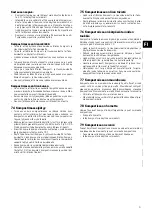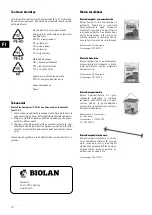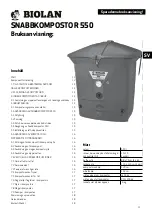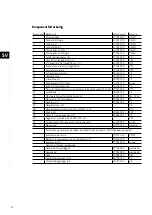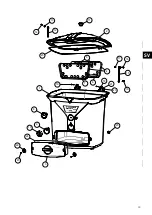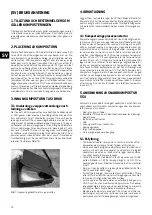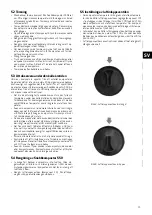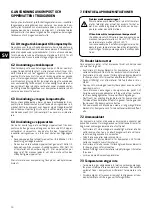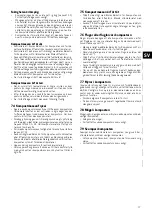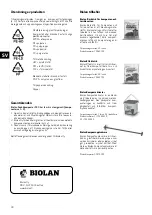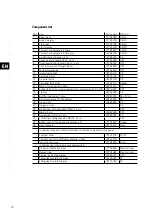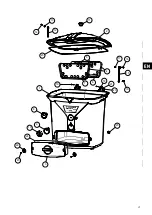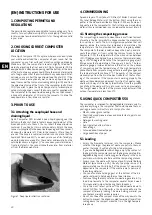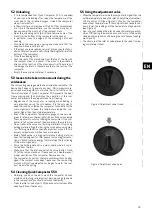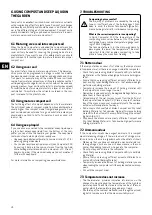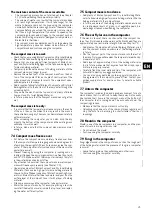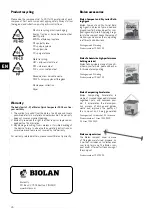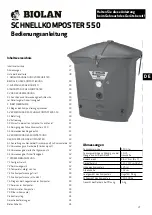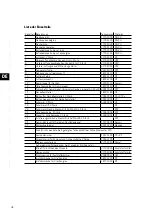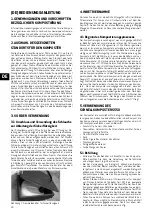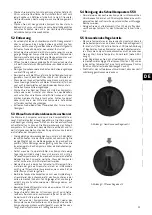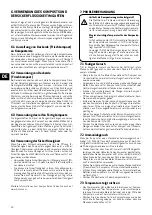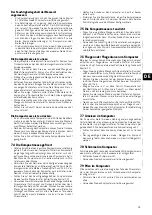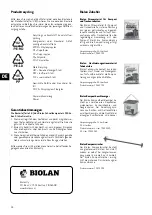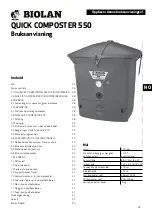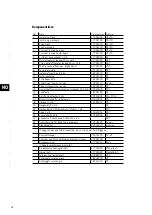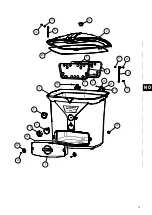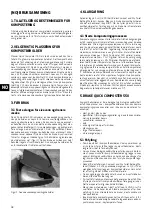
23
FI
SV
EN
DE
NO
ET
LV
LT
RU
FR
PL
CS
5.2 Unloading
• It is recommended that Quick Composter 550 is unloaded
all year round. Unloading often raises the temperature of the
mass due to the increased oxygen. Unload the composter
when it is almost full.
• In the wintertime, only remove a little bit of the compost mass
at a time. In the summertime, you can remove more, but al-
ways unload at the most half of the compost mass.
• Open the unloading hatch (part 3) and remove some of the
mass from the bottom of the composter with a shovel.
• In particular, clean the edges of the unloading hatch and
opening.
• Also clean the seep liquid opening and make sure that the
seep liquid hose is not blocked.
• If the mass you removed was very wet, place a couple of shov-
elfuls of Biolan Compost and Dry toilet Bulking Material at the
bottom of the composter.
• Close the unloading hatch.
• Push the rest of the mass down from the top of the bin with
the compost mixer or a shovel. If the mass in the middle is
drier, push that portion of the mass down first. Take care not
to damage the inlet air channels located in the centre of the
composter.
• Empty the seep liquid container, if necessary.
5.3 Issues to be taken into account during the
cold season
The composting waste generates heat inside the composter; the
device itself does not generate any heat. Micro-organisms re-
quire fresh waste regularly to maintain their vital functions. The
thermal insulation of Quick Composter 550 prevents the heat
from escaping and, thus, promotes the operation of the com-
poster and prevents the compost mass from freezing.
• Regular use of the composter, i.e. loading and unloading, is
very important during the cold season. It is the only way to
keep the conditions inside the composter favourable for the
micro-organisms to keep the temperature inside the com-
poster higher than the outside temperature.
• Even if the composter’s temperature gauge shows zero de-
grees for a few days, there might still be unfrozen mass inside
the composter. Do not stop loading the composter. If the com-
poster is full, unload some of the mass also in the wintertime.
• Do not reduce the amount of bulking material or stop using
bulking material altogether during the cold season: using plen-
ty of bulking material is especially important when it is cold.
as wet compost mass will freeze up more easily.
• Biolan Tehokuivike is a high-performance bulking material
specifically designed for cold season composting (accesso-
ries, p. 26) and contains energy that maintains the functioning
of the micro-organisms.
• Store the bulking material in a warm space where it is pro-
tected from the rain.
• Make sure that the inlet and outlet air valve (parts 10 and
11) of the composter do not freeze over, as it would prevent
proper ventilation of the composter. Remove any ice.
• The composter, its parts or the compost mass will not be dam-
aged if the compost mass does freeze over. The composting
process will continue when the sun begins to warm the com-
post mass in the spring.
5.4 Cleaning Quick Composter 550
• Normally, you do not need to wash the composter. Various
moulds and ray fungi are important decomposing organisms
in the compost, and you should not wash them away.
• Clean the inlet air valve (part 10), the exhaust air valve and the
seep liquid hose, if necessary.
Figure 2. Adjustment valve closed
5.5 Using the adjustment valve
• When the temperature inside the composter is higher than the
outside temperature, keep the inlet air adjustment valve (part
10) at position 100 (see Figure 2). Monitor the composter
and outdoor temperatures. If the compost mass tends to cool
down, lower the reading until the temperature stays warmer
(see Figure 3).
• As a rule, you can keep the inlet air valve completely open (po-
sition 100) during the warm season and turn in to the nearly
closed position (position 20) during the cold season (see Fig-
ures 2 and 3).
• The structure of the inlet air valve prevents the valve from be-
ing completely closed.
Figure 3. Adjustment valve open

